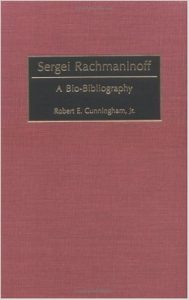Rachmaninoff and the Twentieth Century
During much of the last century, Romanticism and tonality were held in virtual contempt by most of the musical establishment, dismissed as atavistic remnants of a bygone era. Only in the closing decades of the century did Romantic and tonal composition became acceptable again. This tragic story is reflected in the careers of some of the leading Romantic composers of the time. In my opinion it explains why Jean Sibelius — described by one critic as “the worst composer in the world” — abandoned composing during the last three decades of his life, refusing even to talk about his music.
But as a Rachmaninoff scholar, I naturally view this shameful story through the prism of Rachmaninoff’s reception history. As I wrote in the composer’s bio-bibliography: “There was long a decided breach of opinion between audience and critics; while most of the concert public accepted his music warmly, he was until rather recently viewed with distaste by many critics, musicologists, and professional musicians.” Opined the 1954 New Grove Dictionary, Rachmaninoff’s “monotonous” music was characterized by “artificial and gushing tunes,” and his success with the general public (i. e., unschooled plebeians) was “not likely to last.” His works were claimed to suffer from superficiality, tiresome elegance, and poor grasp of large-scale form. As late as 1979, Richard Coolidge observed that “the chic musical fashion (or anti-fashion) of today is anti-Romanticism,” and Rachmaninoff was anathema because his work “sums up Romanticism.”
Only after the 1973 centenary of Rachmaninoff’s birth did he begin to become at least academically acceptable, if not quite respectable. Scholars begin to examine his work seriously, and by the 1990s musicological interest had soared. I presented the first in-depth analysis of his harmonic structures in my 1999 PhD dissertation. In the same year I completed his bio-bibliography, which was published by Greenwood Press in 2001. Today, Rachmaninoff enjoys a long-overdue posthumous éclat.
Rachmaninoff’s compositional output declined drastically after the Russian Revolution, which sent him into exile. Although the decline is usually attributed to his separation from his homeland, it is hard not to imagine that the prevailing anti-Romanticism played a role as well. In any case, his compositional power remained undiminished in his last decade, as evidenced by the unbroken Romantic spirit and vibrant energy of his Rhapsody on a Theme of Paganini (1934), Symphony No. 3 (1936), and Symphonic Dances (1940).


